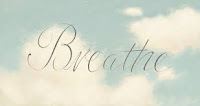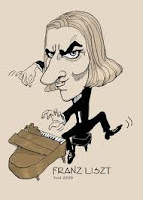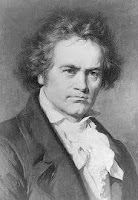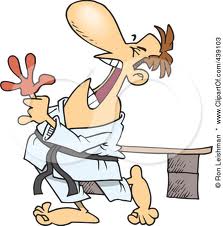On Fingering Piano Music:
An Introduction to Concepts that Govern Choices
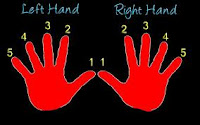 A student came to me recently and asked how to finger a certain passage, claiming that the editor’s fingering didn’t feel right. This is often the case and you can tell a lot about someone’s understanding of technique when looking at their fingerings. My student’s question was fair enough, as all questions are, so I set about writing in a fingering for him. I explained as I went what sort of physical movement the passage required, which was the rationale for the fingering I set down. Then it occurred to me to play the devil’s advocate and show him some other possibilities based on a different technical approach. (I wouldn’t try this with a less advanced pianist.) When he tried the various solutions I offered, his response was a very satisfactory, “wow, this one feels so much easier than that one.” I allowed as how that was the correct response.
A student came to me recently and asked how to finger a certain passage, claiming that the editor’s fingering didn’t feel right. This is often the case and you can tell a lot about someone’s understanding of technique when looking at their fingerings. My student’s question was fair enough, as all questions are, so I set about writing in a fingering for him. I explained as I went what sort of physical movement the passage required, which was the rationale for the fingering I set down. Then it occurred to me to play the devil’s advocate and show him some other possibilities based on a different technical approach. (I wouldn’t try this with a less advanced pianist.) When he tried the various solutions I offered, his response was a very satisfactory, “wow, this one feels so much easier than that one.” I allowed as how that was the correct response.
 Here are some thoughts, then, on how to choose fingering. You’ll notice that nowhere in this list is a mention of hand size. So here are a few words about that. Hand size is almost irrelevant; every hand has the same number of fingers and physical properties that mechanize those fingers. Yes, pianists with thicker fingers have to make adjustments when called upon to play in the black keys. Yes, pianists with longer fingers have to make adjustments in order not to twist when avoiding the black keys. And yes, a person with a wider hand has an advantage when it comes to large filled-in chords, especially octaves with a minor third between thumb and first finger. But if underlying principles of movement are well understood, the progression of the fingers up and down the keyboard, that is, the walking from note to note, is virtually the same in every hand.
Here are some thoughts, then, on how to choose fingering. You’ll notice that nowhere in this list is a mention of hand size. So here are a few words about that. Hand size is almost irrelevant; every hand has the same number of fingers and physical properties that mechanize those fingers. Yes, pianists with thicker fingers have to make adjustments when called upon to play in the black keys. Yes, pianists with longer fingers have to make adjustments in order not to twist when avoiding the black keys. And yes, a person with a wider hand has an advantage when it comes to large filled-in chords, especially octaves with a minor third between thumb and first finger. But if underlying principles of movement are well understood, the progression of the fingers up and down the keyboard, that is, the walking from note to note, is virtually the same in every hand.
These concepts are not original to me. I learned them from Dorothy Taubman, who takes credit for organizing them, not inventing them, and Edna Golandsky, who brilliantly illustrated them. Over the years, though, they have become mine, refined and shaped as I applied them to my own playing and teaching.
A List of Concepts:
The hand falls most naturally onto the keys with the long fingers on short keys, short fingers on long keys.
The hand is most comfortable in its closed position.
The fourth finger can be made to feel and sound as strong as the others do, if its movements are understood.
The position of the thumb when passing under the hand is approximately behind the finger that is playing. At no time should the thumb feel pulled or held under or against the hand.
The hand remains straight with the arm, but may be at an angle with the keyboard, not twisted, i.e., to avoid the black keys.
The thumb and fifth finger may play on the black keys with ease as long as it is understood how to get there and away again.
Since piano keys are levers, the point of least resistance is at the end farthest from the fulcrum. Therefore, the thumb should not be required to hang above the white keys. It may be off the keyboard entirely until it is needed.
Select fingering to avoid stretching. Use a thumb crossing instead.
Select fingering to avoid crowding, i.e., thumb next to 5.
Octaves should not be fingered (legato is an illusion at best). Use all fives.
Consider re-dividing between the hands.
Uncross hands where feasible.
Arbitrarily avoiding 5-5 or 1-1 is not necessary.
Choosing consistent fingering merely because the shape of a passage is consistent (i.e., as in a sequence) is not necessary.
Arbitrarily changing fingers on repeated notes is not necessary.
Advanced Concepts:
The fifth finger may cross over the thumb and the thumb may cross over the fifth finger, particularly in the playing of dominant seventh arpeggios.
Rapid repeated notes are best articulated by beginning each group with the thumb followed by 3 and 2 (triplets) or followed by 4,3,2 (quadruplets).
Play chromatic thirds by repeating the thumb and crossing a longer finger over a shorter finger.
 A student writes that he suffers immensely from performance anxiety. He practices diligently but feels out of control in performance and he can't stop negative thoughts from interfering.
A student writes that he suffers immensely from performance anxiety. He practices diligently but feels out of control in performance and he can't stop negative thoughts from interfering. 